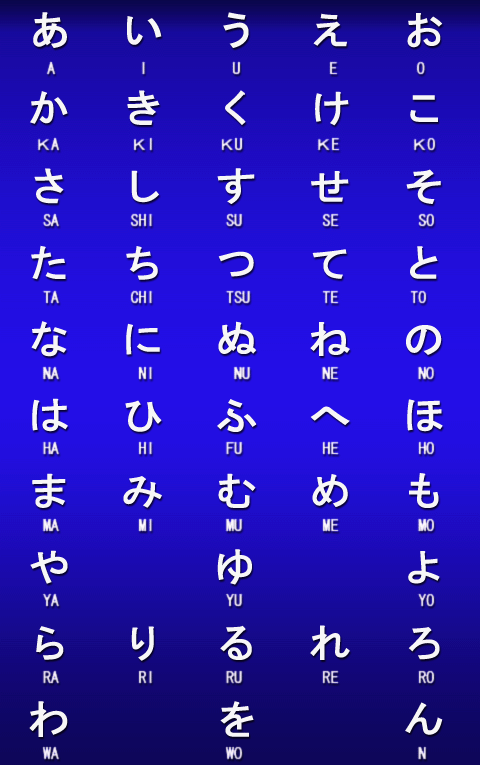We couldn't have made our project successful without the sources below! We thank them all and Google as well :)
Korean Flag: http://www.paulnoll.com/Korea/History/South-Korean-flag.html
The Kanji Writings: http://www.google.com.sg/imglanding?q=hiragana+katakana&hl=en&sa=X&biw=1345&bih=612&gbv=2&tbm=isch&tbnid=UFsIO5POlrBcHM:&imgrefurl=http://englishtreejapan.tripod.com/archive/learning-hiragana.htm&imgurl=http://englishtreejapan.tripod.com/images/Hiragana.gif&w=480&h=765&ei=fVO1TanbBZTAsAOWrsXnCw&zoom=1&iact=rc&page=2&tbnh=153&tbnw=96&start=24&ndsp=23&ved=1t:429,r:3,s:24
Sharon Tree: http://www.google.com.sg/imglanding?q=sharon+bush+close+up&hl=en&gbv=2&tbm=isch&tbnid=KgTLuE-3y-Bk6M:&imgrefurl=http://www.nature-and-flower-pictures.com/rose-of-sharon-pictures.html&imgurl=http://i7.photobucket.com/albums/y283/sallyann53/Roses/rose-of-sharon-pictures/rose-of-sharon-bush-w-4930.jpg&w=800&h=600&ei=rU-1Taz6AsKJrAePnIXJDQ&zoom=1&iact=hc&page=1&tbnh=148&tbnw=197&start=0&ndsp=18&ved=1t:429,r:7,s:0&biw=1345&bih=6
Youtube Video on WWII: http://www.youtube.com/watch?v=Ptm8cguMjJU
Lil Sharon Tree :)
Hello this blog is by the group Lil Sharon Tree ! Literature all the way :) This project is based on the book "When My Name Was Keoko" by Linda Sue Park.
Monday, 25 April 2011
Research of Events (Uncle Working for the Resistance)
A picture of a Korean flag that Uncle had drawn for Sun-Hee and Tae-Yul on a piece of paper.
Source of Information: Google Images ( http://www.paulnoll.com/Korea/History/South-Korean-flag.html )
Research of Events (Sun-Hee: Top Kanji Student)

An example of the Japanese kanji writing from the Japanese Alphabet book. It gives us an idea on how to write Sun-Hee's kanji words when she practises writing it and learning new words. We also have reference to Siew Li's Hiragana Katakana. Three cheers for Siew Li! :)
Source of Information: Google Images (http://www.google.com.sg/imglanding?q=hiragana+katakana&hl=en&sa=X&biw=1345&bih=612&gbv=2&tbm=isch&tbnid=UFsIO5POlrBcHM:&imgrefurl=http://englishtreejapan.tripod.com/archive/learning-hiragana.htm&imgurl=http://englishtreejapan.tripod.com/images/Hiragana.gif&w=480&h=765&ei=fVO1TanbBZTAsAOWrsXnCw&zoom=1&iact=rc&page=2&tbnh=153&tbnw=96&start=24&ndsp=23&ved=1t:429,r:3,s:24 )
Research of Events (Sharon Trees Chopped Down)

This picture of the sharon flowers gives us reference to us as we have the leaves of a sharon tree as one of our artefacts. We used this as a guide to pick the most appropriate leave that looks almost like that of a sharon tree.
Source of Information: ( http://www.google.com.sg/imglanding?q=sharon+bush+close+up&hl=en&gbv=2&tbm=isch&tbnid=KgTLuE-3y-Bk6M:&imgrefurl=http://www.nature-and-flower-pictures.com/rose-of-sharon-pictures.html&imgurl=http://i7.photobucket.com/albums/y283/sallyann53/Roses/rose-of-sharon-pictures/rose-of-sharon-bush-w-4930.jpg&w=800&h=600&ei=rU-1Taz6AsKJrAePnIXJDQ&zoom=1&iact=hc&page=1&tbnh=148&tbnw=197&start=0&ndsp=18&ved=1t:429,r:7,s:0&biw=1345&bih=6 )
Reference to our Journal Entries of our Scrapbook
This is a video that we made reference to before we started drafting out the journal entries in our scrapbook. We wanted to know how life was like during the Japanese occupation, like how Rhee Jae Sun had been through. This is so that we could understand how it felt like and how the atmosphere was like being a victim during that period of time. We also needed to understand the language used as we needed to be in the shoes of Rhee Jae Sun. In this case, it was an aggresive and firm tone as the speaker in this video had that accent. By doing this, we could make our scrapbook as realistic as possible.
Photo of Old Papers Used For the Pages of Our Scrapbook
These are papers dipped in coffee to give it an olden and antique effect. This is so because the paper dates backs to the days during the Japanese occupation, which is during the 1940s. Therefore, the paper is worn out and old, having the brown effect on it.
Instructions to make paper:
1. Boil water for 5 mins.
2. Pour packets of coffee powder in a huge tub. Pour the boiled water into the tub.
3. Stir the tub of coffee powder thouroughly until all the powder dissolves and coffee is made.
4. Take some a4-sized blanked papers and gently put them on the surface of the coffee. After the paper turns brown in colour, flip it over for the remaining white areas to turn brown as it dissolves.
5. Repeat step 4 for all 14 papers.
6. Use a hairdryer to dry the paper thouroughly and leave it to sun to dry completely.
Credits:
~Siew Li (for making the brown paper)
~Yang Yao (writing down the steps)
~Asilah (taking the picture of the final product of the paper)
Photo of Japanese Alphabet Book (Hiragana Katakana)
This is a picture of a Japanese alphabet book as reference for the artefacts as we had an artefact that has Sun-Hee's kanji words written on an old paper.
Subscribe to:
Comments (Atom)

